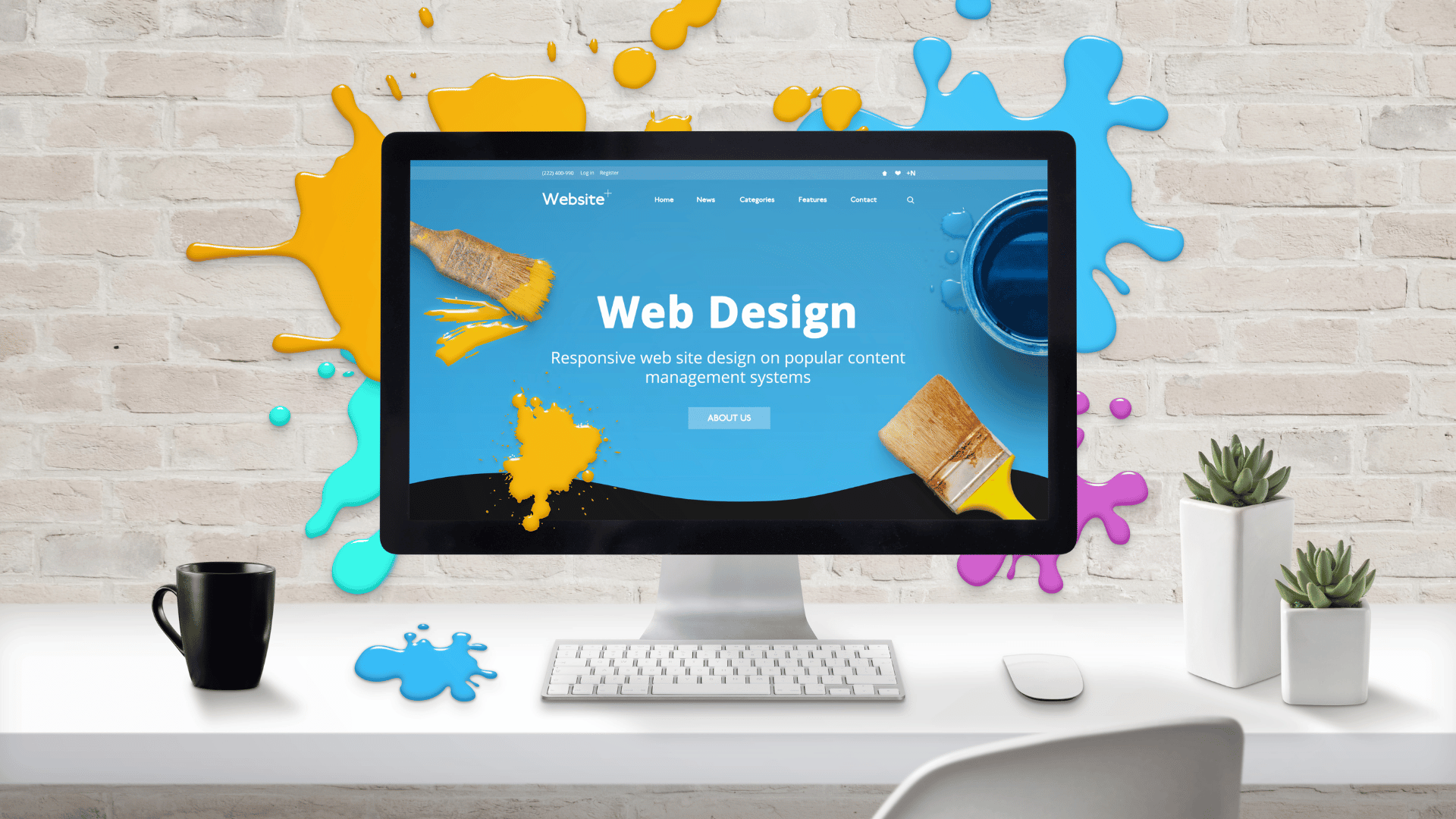Vital Tips for Creating Stunning Website Design That Mesmerizes Visitors
You're not just producing a site; you're crafting an experience for your visitors when it comes to web layout. It is very important to know who your target market is and what they desire. By concentrating on individual experience and ensuring your design is both responsive and aesthetically enticing, you can make a considerable impact. But there are a lot more components to ponder that can raise your style even better. Allow's discover those essential suggestions.
Understand Your Target Audience
How well do you actually know your target market? Understanding who your visitors are is vital for effective internet design. Start by recognizing their demographics, rate of interests, and pain factors. Ask on your own what problems your internet site can fix for them. Use studies, analytics, and social networks insights to gather valuable data.Once you have actually got a clear image of your audience, customize your style components to reverberate with them. Select colors, font styles, and visuals that appeal to their choices. If your audience skews more youthful, take into consideration modern-day, lively looks. For a professional group, a sleek, minimalist strategy may work better.
Focus On User Experience
While you might have a spectacular layout, it won't matter if your customers can't browse your website quickly. Focusing on user experience is necessary for maintaining visitors involved. Begin by guaranteeing your website's format is intuitive. Usage clear headings, sensible food selections, and constant navigating components. In this manner, individuals can locate what they need without frustration.Next, focus on tons times. A slow-moving website can drive users away, so enhance photos and lower unnecessary scripts. Make sure your content is legible also-- choose legible font styles and preserve a great comparison in between text and background.Don' t ignore ease of access. Make certain that your layout accommodates all users, including those with disabilities. Use alt texts for images and offer keyboard navigation options.Finally, test your site with real individuals. Gather comments, determine pain points, and make modifications. By prioritizing user experience, you'll produce an internet site that captivates and keeps visitors.
Make Use Of Responsive Style
When developing your site, you can't ignore the value of receptive style. By producing mobile-friendly layouts, executing fluid grid systems, and making use of media questions, you'll assure your website looks wonderful on any kind of gadget. This method not only boosts customer experience however likewise increases your site's access.
Mobile-Friendly Layouts
Have you ever before tried maneuvering a website on your phone just to be annoyed by tiny message and confined layouts? You're not the only one, which's why mobile-friendly designs are essential. To maintain your visitors engaged, assure your site adapts perfectly to various screen sizes. Usage versatile photos and scalable typography so material looks wonderful on any type of device. Focus on touch-friendly buttons and navigating to make searching intuitive and very easy. Remember, a tidy, easy layout can enhance customer experience and motivate longer visits. Check your design on different devices to determine any problems. By creating a mobile-friendly design, you'll not just improve access however additionally increase site visitor complete satisfaction, inevitably improving your internet site's success. Don't forget this important element of modern-day web layout!
Fluid Grid Systems
Developing a mobile-friendly layout sets the phase for implementing fluid grid systems in your website design. Liquid grids allow your design to adjust seamlessly to different display dimensions, guaranteeing a consistent experience for all users. Instead of dealt with pixel measurements, use relative systems like percents to specify your format aspects. This strategy guarantees that your design remains proportional, regardless of the device.When making use of liquid grid systems, focus on essential material positioning and readability. Damage your layout right into columns that can rearrange or stack based on the screen width. Keep in mind, the goal is to produce a visually attractive interface that maintains performance across gadgets. By accepting fluid grids, you'll enhance user engagement and keep visitors captivated on any screen.
Media Queries Use
Media questions are important tools in receptive internet style, enabling your site to adapt to various gadgets and screen sizes. By using media questions, you can use certain CSS policies based on device characteristics like height, size, and resolution. This means your site can look terrific on smart phones, tablets, and desktop computers without jeopardizing high quality or usability.Start by defining breakpoints in your CSS that target various screen dimensions. For instance, you may adjust font dimensions or format structures for smaller displays. Always evaluate your style throughout numerous devices to guarantee ideal watching experiences. Remember, a responsive layout not only improves individual involvement but likewise increases your site's internet search engine position. Welcome media queries and see your website design radiate!
Choose the Right Color Scheme
Selecting the appropriate color palette can make or break your website design. Colors evoke emotions and established the tone for your website, so it's important to pick carefully. Beginning by comprehending your brand identification. If you intend to communicate count on, consider blues; for exhilaration, select lively reds or yellows.Next, limit your scheme to three to 5 colors. Way too many tones can detract and bewilder site visitors from your message. Use tools like Adobe Color or Coolors to help you find unified combinations.Don' t ignore comparison; it improves readability and guides individuals via your content. Make sure your text attracts attention against the background.Finally, consider access. Usage color mixes that get along for color-blind customers and make certain your website stays useful for everybody. By selecting the best colors, you'll develop an inviting atmosphere that keeps visitors involved and encourages them to explore.

Include Visual Pecking Order
To create a reliable internet style, you need to include aesthetic power structure. Start by specifying vital elements clearly, utilizing size and color to attract interest where it matters most. Regular formats will assist guide your visitors, making it easier for them to browse your material.
Define Crucial Element Clearly
Aesthetic hierarchy is important in internet style, assisting individuals via your content perfectly. To specify crucial elements plainly, prioritize what's essential. Use subheadings and headings to create a logical structure, making it very easy for site visitors to check your website. Establish that your primary message stands apart, drawing focus without overwhelming the audience. Damage up message with bullet factors or listings to highlight substantial details, making it digestible. Uniformity in font selections and spacing also plays an essential role in offering your material clearly. Additionally, include whitespace effectively to give aspects room to breathe, aiding users focus on each section. By defining crucial elements plainly, you boost the total customer experience and keep site visitors engaged.
Usage Size and Shade
Defining key components clearly sets the stage for utilizing dimension and shade properly. Select a shade combination that mirrors your brand name identification and evokes the right feelings. Use contrasting shades to draw attention to crucial aspects like phone call to action. Next, leverage size to establish a visual power structure; larger aspects normally attract more interest. web design london ontario. As an example, headings must be bold and prominent, while sustaining message can be smaller and subtler. This mix guides site visitors' eyes via your material, making navigation instinctive. Bear in mind, equilibrium is important-- too large aspects or lots of shades can bewilder your audience. By attentively applying dimension and shade, you'll boost user experience and keep site visitors involved longer
Execute Constant Layouts
Developing a regular design throughout your website is necessary for keeping a smooth customer experience. When site visitors experience a familiar framework, they can navigate your site extra quickly, keeping their focus concentrated on your content. Use visual pecking order to lead individuals with your pages. Prioritize key aspects like headings, images, and phones call to action by differing colors and dimensions, which aids produce an intuitive flow.Ensure your layout elements-- like switches, typefaces, and spacing-- are uniform throughout the site. This uniformity cultivates brand acknowledgment and count on. Furthermore, organize info practically, so individuals can find what they need without disappointment. Carrying out these strategies will not just improve aesthetic appeal but additionally motivate visitors to stay longer and involve even more deeply with your web content.
Optimize for Efficiency
To assure your site runs smoothly and efficiently, maximizing for performance is crucial. Start by lessening your photo dimensions without sacrificing high quality. Use styles like JPEG or WebP, and think about compressing images before uploading. Next, utilize browser caching to speed up load times for returning visitors. This means, they won't need to download and install the same sources each time they visit your site.Additionally, minimize using heavy scripts and plugins that can reduce your website. Rather, go with light-weight choices that preserve performance without compromising speed. Carrying Out a Web Content Distribution Network (CDN) can likewise help distribute your material more effectively, minimizing latency for individuals across different places. Regularly check your site's performance with devices like Google PageSpeed Insights, making necessary modifications to assure optimum load times. By focusing on these elements, you'll create a faster, extra effective website that keeps visitors engaged.
Keep Material Fresh and Engaging
While an aesthetically enticing design records interest, keeping your material fresh and interesting is what genuinely holds site visitors on your site. Update your content consistently to reflect the most current patterns, insights, and news in your market. This not just improves your trustworthiness however also motivates repeat visits.Use a selection of material styles, like videos, blogs, and infographics, to accommodate different choices. Engaging storytelling can make your message reverberate much more. Don't fail to remember to communicate with your audience with surveys or remarks; this cultivates a sense of community.Incorporate user-generated web content, like evaluations and endorsements, to include authenticity. Ensure your content is simple to review and visually attractive by breaking it right into absorbable sections. Constantly keep your target audience in mind. Customizing content to their demands and passions will guarantee they stay involved and purchased what you have to supply.
Often Asked Questions

What Equipment Can I Utilize for Web Design?
You can utilize devices like Adobe XD, Lay Out, and Figma for website design. They offer intuitive user interfaces and collaborative features. Do not fail to remember to discover Canva and WordPress for aesthetically attractive and quick web styles.
Exactly how Frequently Should I Update My Website's Layout?
You need to update your website's style every 1-3 years, or whenever considerable modifications take place in your brand or market. Regular updates keep your website fresh, engaging, and aligned with existing trends to bring in site visitors successfully.

Should I Employ a Professional or Layout It Myself?
You must consider your abilities and time. Designing it on your own can be rewarding if you're certain and have the resources. Nonetheless, hiring a professional warranties brightened outcomes and saves you time for other priorities.
What Prevail Website Design Blunders to Avoid?
Avoid cluttered formats, inconsistent font styles, and bad navigating. Do not overlook mobile responsiveness or fail to remember to optimize loading speeds. Focus on customer experience, ensuring your layout's functional and aesthetically appealing, so visitors stay engaged and explore further.
How Can I Gauge the Success of My Website Design?
To gauge your website design's success, track user involvement metrics like bounce rates, session period, and conversion prices. Gather responses via surveys and analyze web traffic patterns. click here Change your design based upon the insights you acquire. While you might have a sensational design, it won't matter if your individuals can not browse your website conveniently. When designing your internet site, you can not forget the relevance of responsive design. Bear in mind, a receptive style not only boosts user interaction but also enhances your site's search engine ranking (web design london ontario). Aesthetic power structure is crucial in internet layout, directing individuals with your content effortlessly. To determine your internet layout's success, track individual interaction metrics like bounce rates, session period, and conversion rates